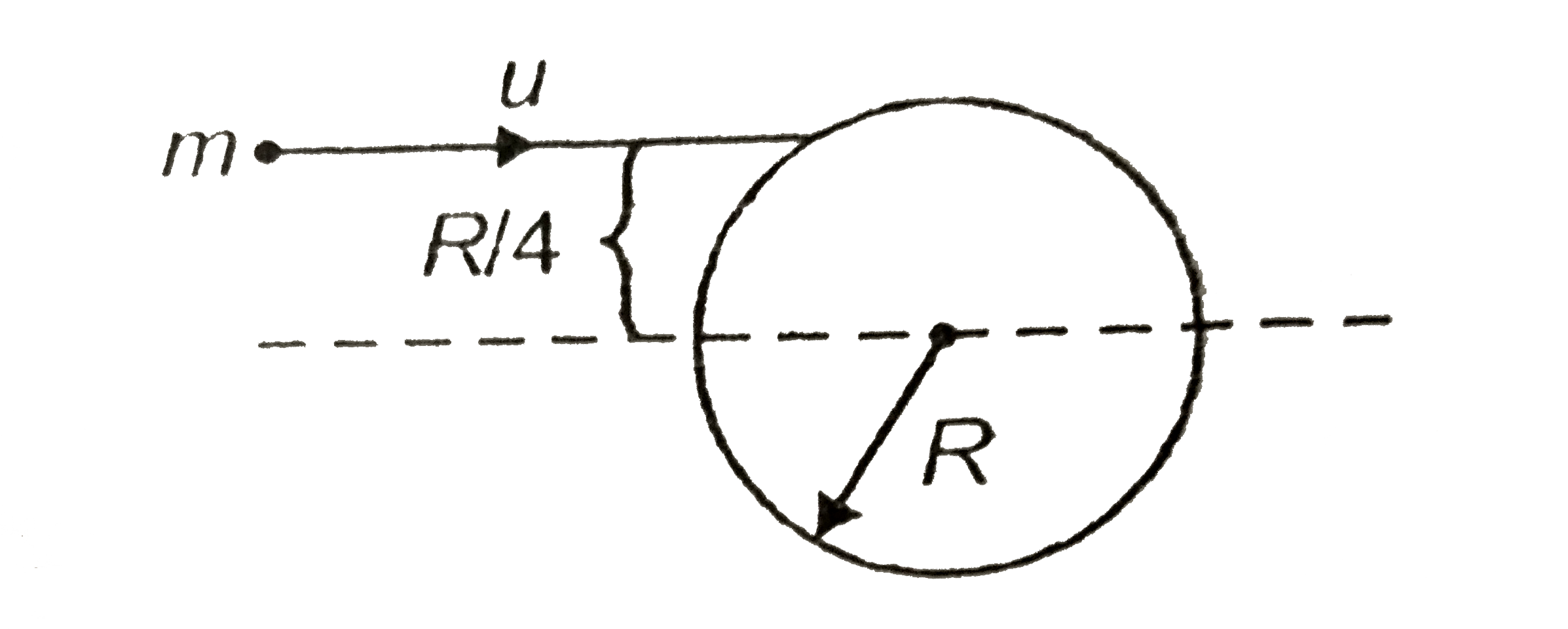In the figure mA=mB=1kg. Block A is neutral while qB=−1C. Sizes of A and B are negligible. B is released from rest at a distance 1.8 m fromt A. Initially spring is neither compressed nor elongated.

If collision between A and B is perfectly inelastic, what is velocity of combined mass just after collision ?
6 m/s
3 m/s
9 m/s
12 m/s
The correct Answer is:B
Step by step video & image solution for In the figure m_(A) = m_(B) = 1 kg. Block A is neutral while q_(B) = -1C. Sizes of A and B are negligible. B is released from rest at a distance 1.8 m fromt A. Initially spring is neither compressed nor elongated. If collision between A and B is perfectly inelastic, what is velocity of combined mass just after collision ? by Physics experts to help you in doubts & scoring excellent marks in Class 11 exams.
Updated on:21/07/2023Topper's Solved these Questions
- ELECTROSTATICSBOOK - DC PANDEY ENGLISHCHAPTER - ELECTROSTATICSEXERCISE - Matrix Matching
2 Videos
- ELECTROSTATICSBOOK - DC PANDEY ENGLISHCHAPTER - ELECTROSTATICSEXERCISE - Integer
17 Videos
- ELECTROSTATICSBOOK - DC PANDEY ENGLISHCHAPTER - ELECTROSTATICSEXERCISE - JEE Advanced
44 Videos
- ELASTICITYBOOK - DC PANDEY ENGLISHCHAPTER - ELASTICITYEXERCISE - Medical entrances s gallery
21 Videos
- EXPERIMENTSBOOK - DC PANDEY ENGLISHCHAPTER - EXPERIMENTSEXERCISE - Subjective
15 Videos
Similar Questions
In the figure mA=mB=1kg. Block A is neutral while qB=−1C. Sizes of A and B are negligible. B is released from rest at a distance 1.8 m fromt A. Initially spring is neither compressed nor elongated.

The amplitude of oscillation of the combined mass will be
View SolutionIn the figure mA=mB=1kg. Block A is neutral while qB=−1C. Sizes of A and B are negligible. B is released from rest at a distance 1.8 m fromt A. Initially spring is neither compressed nor elongated.

Equilibrium position of the combined mass is at x = ........m.
View SolutionElectrostatic force on a charged parricle is given by .F=q→E. If q is positive →F↑⏐⏐⇒→E↑⏐⏐ and if q negative →F↑⏐⏐⇒→E⏐⏐↓
Question : In the figure mA=mB=1kg. Block A is neutral while qB=−1C. Sizes of A and B are negligible. B is relased from rest at a distance 1.8 m from A. Initially spring is neither compressed nor elongated

The amplitude of oscillation of the combined mass will be :
View SolutionTwo balls of masses m each are moving at right angle to each other with velocities 6 m/s and 8 m/s respectively. If collision between them is perfectly inelastic, the velocity of combined mass is
View SolutionVelocity of the ball A after collision with the ball B as shown in the figure is (Assume perfectly inelastic and head - on collision)

View SolutionThe track shown in figure is frictionless. The block B of mass 2 m is lying at rest and the block A of mass m is placed along the track with some speed. The collision between A and B is perfectly elastic. With what velocity should the block A be started to get the sleeping man awakened ?

View SolutionA particle of mass m strikes a disc of radius R and mass m with a speed u as shown in the figure. What is the speed of the particle just after the collision if the collision is perfectly inelastic ?

View SolutionConsider on object of mass m moving with velocity v0 and all other masses at rest initially. Find the % loss in energy after final collision. If all collision are perfectly inelastic.

View SolutionConsider the elastic collision f two bodies A and B of equal mass. Initially B is at rest and A moves with velocity v. After the collision -
View SolutionThe track shown in the figure is frictionless. The block B of mass 4kg is lying at rest and block A of mass 2kg is pushed along the track with some speed. The collision between A and B is perfectly elastic. With that velocity should the block A start such that block B just reaches at point P ?

View Solution
